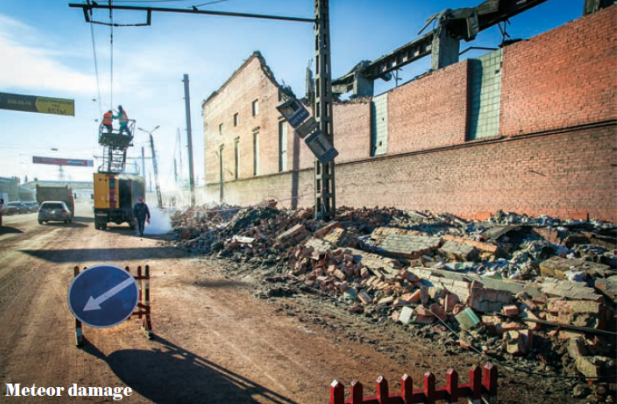After the recent Chelyabinsk Event, where an asteroid came crashing down injuring over a 1000 people, preparations are being made to prevent such catastrophes in the future. Despite the rarity of occurrence of this particular event (once in a century) scientists are not taking any chances considering the magnitude of destruction it can cause. It was not that the world was sleeping prior to that, but the fact is that, unfortunately, nothing is likely to protect us from a meteor the size of the one that exploded over the Russian city.
Most of the telescopes of today focus on larger objects compared to the Chelyabinsk object which was only 17 meters. But in the coming years NASA will collate new data about near-Earth objects also termed as NEOs including asteroids and comets. We can only hope that the next such event occurs after a century and perhaps mankind, by then, will have the required advanced technology to keep any threat to Earth at bay.

So here are a few of the current tools and latest upcoming telescopes which are in the making for asteroid detection and defense:
[dcs_ul_list type=”squ-blue”]
- Catalina Sky Survey: The Catalina Sky Survey has been the leading project for near-Earth object detection since the 2000s and now discovers about 600 NEOs every year from telescope sites in Arizona and Australia. It has helped NASA reach its goal of cataloguing 90 percent of all NEOs more than one kilometer in diameter.
- (Pan-STARRS): The first of four planned Panoramic Survey Telescope and Rapid Response System telescopes in Hawaii recently came online and is now the second-leading NEO search in existence, in terms of objects detected per year. It should help discover many asteroids with diameters in the hundreds of meters, but the bulk of smaller objects will remain out of reach.
- Large Synoptic Survey Telescope (LSST): This 8.4 meter telescope has been planned for the end of the decade in Chile. Equipped with a 3 Gigapixel digital camera, it will eventually catalog the vast majority of much larger objects—those 140 meters and up in diameter—thereby meeting NASA’s next asteroid-detection goal. This instrument definitely promises some astonishing capabilities.
- (ATLAS): The Asteroid Terrestrial-Impact Last Alert System is scheduled for releases in 2015. The main goal of this device will be to detect asteroids in time in order to evacuate the threatened areas. Researchers say that this device will be so efficient the series of small Hawaii-based telescopes could identify a 50-meter “city killer” one week ahead of possible collision.
- Sentinel Space Telescope: A nonprofit B612 Foundation recently unveiled plans to build this telescope which would scan the inner solar system from an orbit similar to the planet Venus. It would be launched in 2018 and would make quick work of the truly dangerous asteroids out there, with the goal of cataloging 90 percent of NEOs bigger than 140 meters over its 5.5-year mission.[/dcs_ul_list]
With such advanced tech soon at our disposal, we hopefully should have some cushion of safety from the asteroids and meteors. Having said that, one should not underestimate the vast universe of which mankind has very limited knowledge as of now.

































